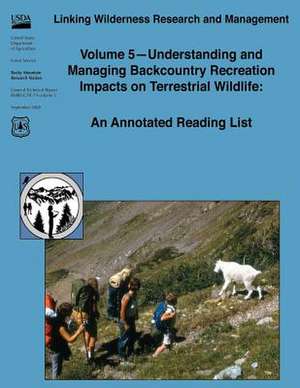Linking Wilderness Research and Management
Autor Douglas Tempel, Vita Wright, Janet Neilsonen Limba Engleză Paperback
Preț: 110.23 lei
Nou
Puncte Express: 165
Preț estimativ în valută:
21.09€ • 21.98$ • 17.46£
21.09€ • 21.98$ • 17.46£
Carte disponibilă
Livrare economică 13-27 martie
Preluare comenzi: 021 569.72.76
Specificații
ISBN-13: 9781480172289
ISBN-10: 1480172286
Pagini: 80
Dimensiuni: 216 x 279 x 4 mm
Greutate: 0.21 kg
Editura: CREATESPACE
ISBN-10: 1480172286
Pagini: 80
Dimensiuni: 216 x 279 x 4 mm
Greutate: 0.21 kg
Editura: CREATESPACE
